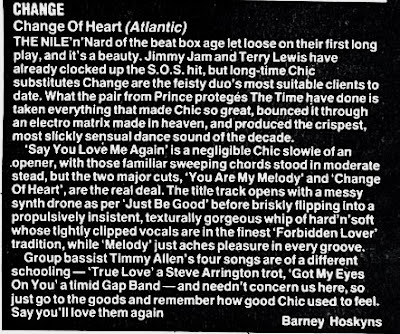Chic are a proof of my theory-stance-contention that the best disco is the the disco that made the charts
there is a logic to the syndrome of "the best stuff crossed over and became pop"
for what are the premises on which disco is based, its metric?
Good beat, good groove
Strong vocal performance
Great melody
Cool shiny production
Those happen to be exactly the same premises on which successful pop music is based - a beat you a dance to, a tune you can sing along to it, a certain conventional idea of vocal power, bright slick shiny production, well played etc
up to a certain point, you can say that disco-ness is poptasticness
so underground disco means simply not known by that many people,
means not that successful on its own terms
Underground disco cultists are very similar to the Northern Soul thing
The Northern Soul people liked Motown-type music. But Motown they considered “commercial” – meaning, simply that ordinary kids knew about it cos it had been in the charts. So they formed a whole cut around either Motown releases that had not been hits (cos they weren’t quite good enough) and then the Motown-wannabes, of which they were droves. And there was so much of this second-division, solid uptempo soul made then that they could sustain a whole culture based on it, and never play the Four Tops or Martha and the Vandellas or the Supremes.
Eventually they moved into the third-rate and the overtly
substandard.
You get the same thing with garage punk of the Sixties – which I was really into and I went pretty deep into the second-rate zone, cos I loved that particular energy and set of noises and vocal aggression
But the best stuff - objectively - was either the British groups who
inspired the garage punks or those one-hit wonders like Count Five with
‘psychotic reactions’
Oh here and there you’ll come across something you think ‘this
could have been a hit, should have been a hit’
But the bulk of it is determinedly second-division and
enjoyable on that level if you are that obsessed with the sound
Same with disco

